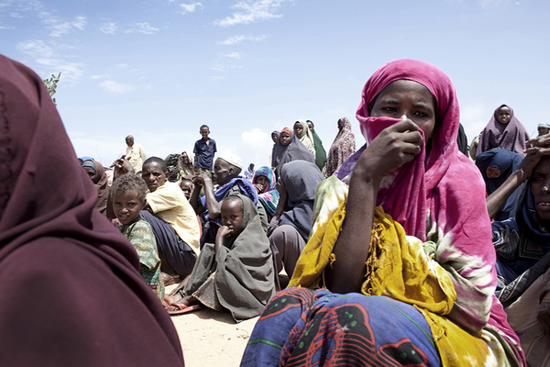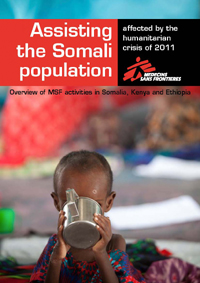This document gives an overview of MSF activities related to the humanitarian crisis in Somalia and neighboring Kenya and Ethiopia. The data presented, though provisional, account for MSF’s medical activities and financial income and expenditures in this region, while the narrative illustrates how MSF as a medical aid organization responded to this evolving crisis.

Somalia 2011 © Martina Bacigalupo
A Somali woman waits for food distribution in the Badbadoo refugee camp.
Somalia’s humanitarian crisis continues to be one of the worst in the world. This year, Somalis have faced the devastating effects of drought, compounding a long-lasting conflict and the absence of a functioning health care system.
Throughout 2011 Doctors Without Borders/Médecins Sans Frontières (MSF) ran medical projects in up to 22 different locations in south-central Somalia, the epicenter of the crisis, as well as large-scale programs in the Somali refugee camps in Ethiopia and Kenya.
In the period from May to December 2011, MSF treated over 95,000 patients for malnutrition, and treated over 6,000 patients for measles and vaccinated almost 235,000 children against the disease. Within its various health care structures MSF assisted in over 5,500 deliveries and provided over 450,000 consultations.
However, despite intense negotiations with armed groups, access to the most affected regions inside south-central Somalia has remained difficult.
This document gives an overview of MSF activities related to the humanitarian crisis in Somalia and neighboring Kenya and Ethiopia. The data presented, though provisional, account for MSF’s medical activities and financial income and expenditures in this region, while the narrative illustrates how MSF as a medical aid organization responded to this evolving crisis.





